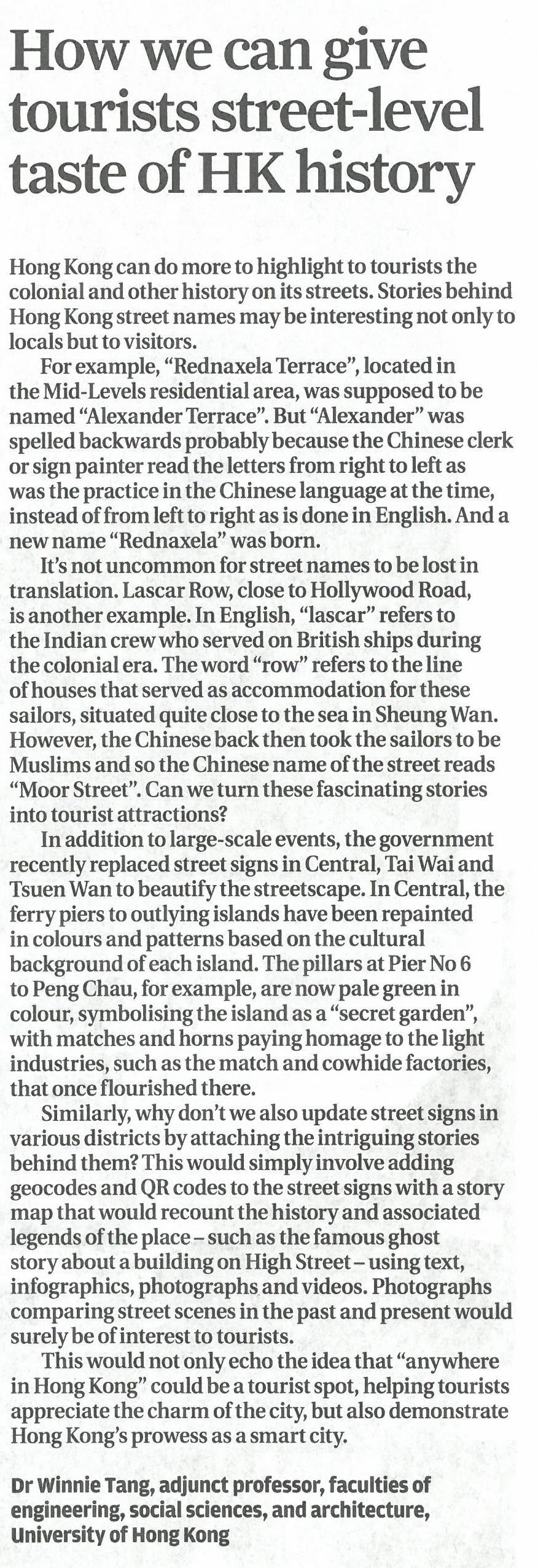網上版請按此

How we can give tourists street-level taste of HK history
Hong Kong can do more to highlight to tourists the colonial and other history on its streets. Stories behind Hong Kong street names may be interesting not only to locals but to visitors.
For example, "Rednaxela Terrace", located in the Mid-Levels residential area, was supposed to be named "Alexander Terrace". But "Alexander" was spelled backwards probably because the Chinese clerk or sign painter read the letters from right to left as was the practice in the Chinese language at the time, instead of from left to right as is done in English. And a new name "Rednaxela" was born.
It's not uncommon for street names to be lost in translation. Lascar Row, close to Hollywood Road, is another example. In English, "lascar" refers to the Indian crew who served on British ships during the colonial era. The word "row" refers to the line of houses that served as accommodation for these sailors, situated quite close to the sea in Sheung Wan. However, the Chinese back then took the sailors to be Muslims and so the Chinese name of the street reads "Moor Street". Can we turn these fascinating stories into tourist attractions?
In addition to large-scale events, the government recently replaced street signs in Central, Tai Wai and Tsuen Wan to beautify the streetscape. In Central, the ferry piers to outlying islands have been repainted in colours and patterns based on the cultural background of each island. The pillars at Pier No 6 to Peng Chau, for example, are now pale green in colour, symbolising the island as a "secret garden", with matches and horns paying homage to the light industries, such as the match and cowhide factories, that once flourished there.
Similarly, why don’t we also update street signs in various districts by attaching the intriguing stories behind them? This would simply involve adding geocodes and QR codes to the street signs with a story map that would recount the history and associated legends of the place – such as the famous ghost story about a building on High Street – using text, infographics, photographs and videos. Photographs comparing street scenes in the past and present would surely be of interest to tourists.
This would not only echo the idea that "anywhere in Hong Kong" could be a tourist spot, helping tourists appreciate the charm of the city, but also demonstrate Hong Kong's prowess as a smart city.
Dr. Winnie Tang
Adjunct Professor, Department of Computer Science, Faculty of Engineering; Department of Geography, Faculty of Social Sciences; and Faculty of Architecture, The University of Hong Kong